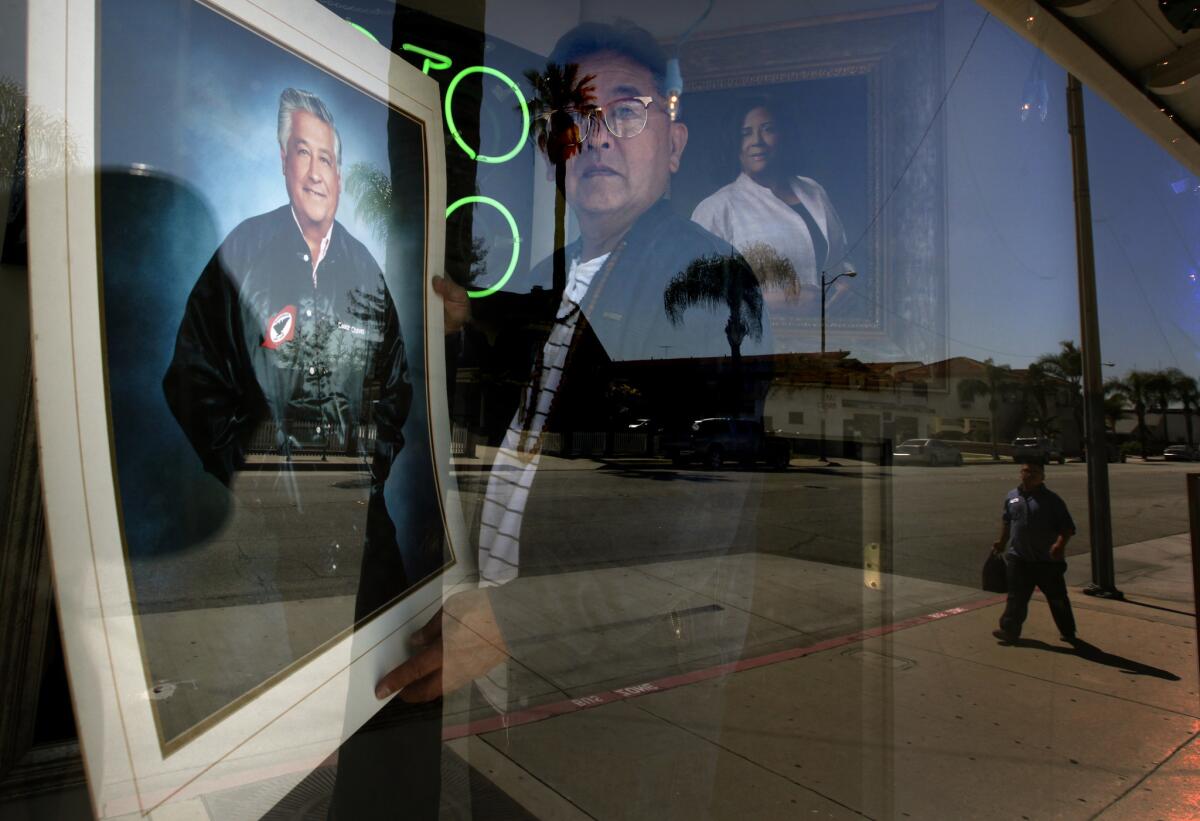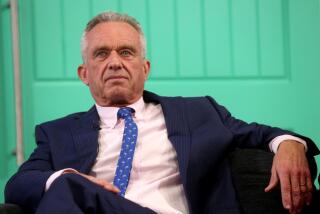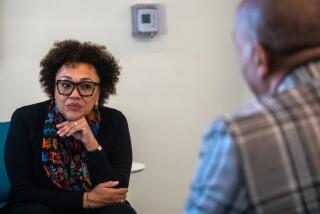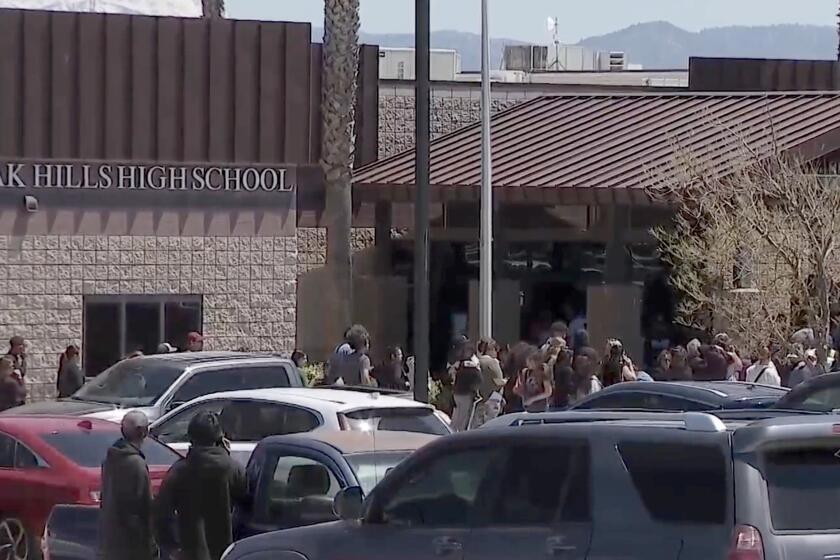Cesar Chavez portrait to go on display at Smithsonian

Gary Miyatake knew that getting Cesar Chavez to pose for a formal portrait would be tricky.
But the photographer was sure he’d find a way, just as his grandfather, who introduced him to his craft, had found his way decades ago.
Miyatake’s chance came 22 years ago, when he was hired to shoot a United Farm Workers event in downtown Los Angeles.
He arrived with lights, a backdrop and a camera, and somehow managed to woo the civil rights leader into standing in front of his lens.
A month later, Chavez died in his sleep and the photo Miyatake captured became one of the icon’s last official portraits.
On Friday at 9 a.m., the photograph will be donated to the Smithsonian in Washington, D.C., in a ceremony at the Japanese American National Museum.
In the image, Chavez stands with a soft smile, his hands tucked in the pockets of his favorite black nylon union jacket. The portrait will be showcased in an exhibit along with the jacket, which was donated to the museum by Chavez’s wife, Helen, shortly after his death.
“It’s such an honor and something I never imagined,” said Miyatake, who had kept the image in his studio all these years, with little exposure to the outside world.
Miyatake’s grandfather, Toyo Miyatake, opened his first studio in Little Tokyo in 1923. He photographed weddings, funerals, parades and family portraits.
When he and his family were sent to the Manzanar internment camp during World War II, Toyo, a close friend of photographers Ansel Adams and Edward Weston, smuggled in equipment and built a camera to secretly document life in the barracks.
Toyo’s photos gained international recognition and, over the decades, he became known as the foremost chronicler of Los Angeles’ Japanese American history.
Today, Toyo’s grandsons carry on his legacy with two photography studios, one in the San Gabriel Valley and another in Gardena.
Gary Miyatake remembers his grandfather pulling him aside as a boy to teach him about photography, showing him how to shape faces from behind the lens and how to make people look their best.
“I remember telling him, ‘Grandpa, one day I’m going to be better than you,’” Miyatake said. “He just looked at me and told me, ‘Good.’”
Over the years, Miyatake and his father, who took over the studio after Toyo Miyatake’s death in 1979, clashed over creative differences. His father was a fan of traditional portraiture, but Miyatake wanted to explore more artistic and documentary styles.
In 1991, Miyatake was fired by his father from the family business, and he became a personal photographer for former Mayor Tom Bradley. It was through those connections that he was hired by a politician to shoot the United Farm Workers 30th anniversary event in 1993.
Miyatake admired Chavez’s social justice work and, as far as he knew, the labor leader lacked an official portrait.
“I felt it was my personal duty to record history and get his portrait,” Miyatake said.
But getting the photo was a long shot.
The politician who hired Miyatake for the event wanted him to just snap a quick photo of him shaking hands with the civil rights leader.
Miyatake surreptitiously showed up with all his equipment and set up an impromptu studio backdrop.
It worked. Miyatake introduced himself and asked the leader to be photographed with the politician and his family against the backdrop.
Finally, Miyatake had Chavez stand alone in front of his camera. He asked him to look straight ahead and put his hands in pockets. Then he snapped the photo.
A month later, Miyatake got a call and learned Chavez had died.
He sent a copy of the photo to Helen Chavez, who was surprised by the image. Her husband had been photographed thousands of times, but it was not common for him to actually pose for a portrait.
Smithsonian curators were excited to discover Miyatake’s image, as it’s one of the few they have found showing Chavez wearing his beloved United Farm Workers jacket.
They were also drawn to Miyatake and the contributions he and his family have made to photography, and in this case, to Latino history.
“It shows Latinos and the Asian community in a complex intersection, existing together in Los Angeles,” said Margaret Salazar, curator of Latino history and culture for the Smithsonian.
Miyatake, now 63, continues to work in his Gardena studio, where he’s taken family portraits since the early 1990s.
His space is filled with all of the images he’s captured over the decades, many featuring judges, politicians and celebrities, such as O.J. Simpson (still wearing his wedding ring).
But the image splashed most prominently across his walls is that of his grandfather, whose advice he still follows.
“This is the greatest thing that’s happened to me, so far,” Miyatake said. “And what can I say?”
“Thank you, Grandpa.”
For more Southern California news follow @LATBermudez
More to Read
Start your day right
Sign up for Essential California for news, features and recommendations from the L.A. Times and beyond in your inbox six days a week.
You may occasionally receive promotional content from the Los Angeles Times.







